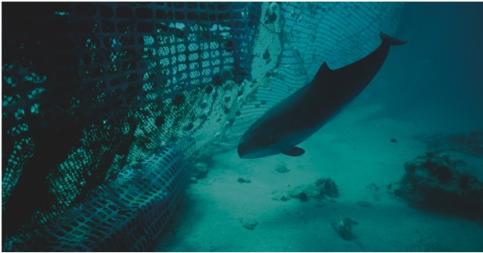Background

Bycatch of small cetaceans is probably the greatest threat to many populations around the world. One of the most affected species is the harbor porpoise (Phocoena phocoena). Several mitigation measures have been put in place to diminish harbor porpoise bycatch in gillnets. One of them is the mandatory use of acoustic alarms, also known as pingers, attached to gillnets. Pingers have successfully reduced entanglement of harbor porpoises in gillnets. Nonetheless, they are considered to act as "dinner bells" to seals attracting them to fishing nets as they have learned to associate pinger sounds with potential food – the so-called “dinner-bell” effect.
The problem

The “dinner bell” effect of pingers becomes problematic for fisheries because seals perceive the nets as a source of food, and thus, follow the pinger sounds to subsequently feed on the fish caught in the nets. Furthermore, the recent expansion of human activities in addition to the recovery of seal populations has led to an increase in seal-fishery interactions. Not only do seals predate on economically valuable fish stocks but also cause expensive fishing gear damage, catch loss, and compete for the same resources with fisheries . In addition, seals face increased mortality due to culling and incidental bycatch. For instance, bycatch of grey seals in Sweden was estimated at 462 individuals in 2001. Nonetheless, given the increasing population size of grey seals bycatch at this scale is considered more of an ethical issue than a threat to the population.
Therefore, it is crucial to further investigate the audibility of different pinger sounds in seals to better understand the “dinner-bell” effect and this way contribute in solving the seal-fisheries conflict.
Aims
- To test the “dinner-bell” effect of three different pingers (Aquamark100, Aquatec 2446 and Banana pingers) in wild grey seals.
- To test the audibility of the same pingers in captive grey seals.
More specifically, the first part of this study investigated whether different types of pingers have an influence on the frequency of stations that presented fish taken by wild grey seals. The second part of this study used psychoacoustic methods to yield hearing thresholds in captive seals for the three aforementioned pingers.
Responsible for this page:
Director of undergraduate studies Biology
Last updated:
05/14/18
